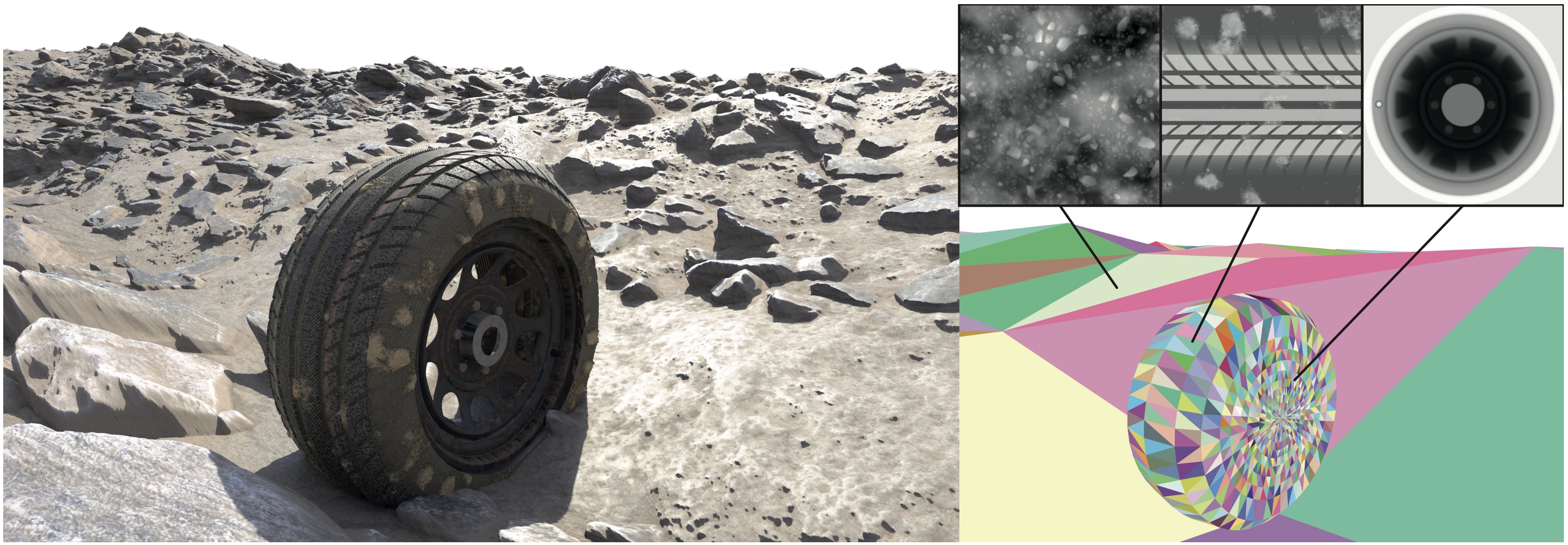 A scene where most geometric content comes from high-resolution displacement mapping. The base geometry and the 4k displacement maps tiled on it are shown on the right. Our proposed method achieves 11x faster path tracing than TFDM, while consuming 3x less memory.
A scene where most geometric content comes from high-resolution displacement mapping. The base geometry and the 4k displacement maps tiled on it are shown on the right. Our proposed method achieves 11x faster path tracing than TFDM, while consuming 3x less memory.
Abstract
High-performance ray tracing of triangle meshes equipped with displacement maps is a challenging task. Existing methods either rely on pre-tessellation, taking full advantage of the hardware but with a poor memory quality tradeoff, or use custom displacement-centric acceleration structures, preserving all the geometric details, but being orders of magnitude slower. We introduce a method that efficiently probes the displacement map space to find intersections without relying on pre-tessellation. Our method combines inverse displacement mapping with on-the-fly surface bounds computation using a novel data structure that models tight bounds over anisotropic axis-aligned regions in the displacement map space. We demonstrate the effectiveness of our approach in a production GPU path tracer, providing from 2x to an order of magnitude speed-up in render time compared to state of the art in the most challenging real-time path tracing scenarios while maintaining a low memory footprint.
Video
Downloads
Bibtex
@inproceedings{TGBB:2023:RMIP,
title = "RMIP: Displacement ray tracing via inversion and oblong bounding",
author = "Théo Thonat and Iliyan Georgiev and François Beaune and Tamy Boubekeur",
year = "2023",
booktitle = "Proc. ACM SIGGRAPH Asia 2023"
}
Related projects
- Tessellation-Free Displacement Mapping for Ray Tracing, Théo Thonat, François Beaune, Xin Sun, Nathan Carr and Tamy Boubekeur, SIGGRAPH Asia 2021.